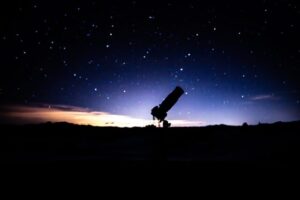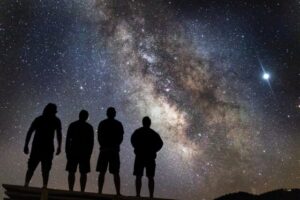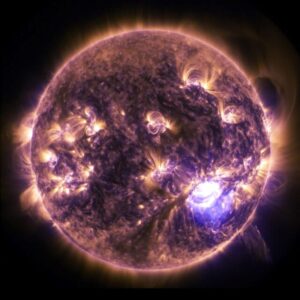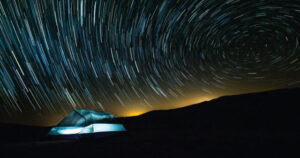Jupiter. Credit: NASA/JPL
After analyzing four years of Kepler space telescope observations, astronomers from the University of Toronto have given us our clearest understanding yet of a class of exoplanets called "Warm Jupiters," showing that many have unexpected planetary companions.
The...
A slice through the map of the large-scale structure of the Universe from the Sloan Digital Sky Survey and its Baryon Oscillation Spectroscopic Survey. Each dot in this picture indicates the position of a galaxy six billion years into...
The figures show the wind, temperature, and surface-atmosphere friction on a planet 1.45 times the size of the Earth in a 1-day orbit around an M dwarf. The two topmost figures show the wind and the temperature in the...
NASA's New Horizons spacecraft captured this high-resolution enhanced color view of Pluto's moon Charon just before closest approach on July 14, 2015. Charon’s striking reddish north polar region is informally named Mordor Macula.Credits: NASA/JHUAPL/SwRI
Where were you at 7:49 a.m....
This artist's impression of the water snowline around the young star V883 Orionis, as detected with ALMA.
Credit: A. Angelich (NRAO/AUI/NSF)/ALMA (ESO/NAOJ/NRAO)
A violent outburst by the young star V883 Orionis has given astronomers their first view of a water "snowline"...
This color view from NASA's Juno spacecraft is made from some of the first images taken by JunoCam after the spacecraft entered orbit around Jupiter on July 5th (UTC).Credits: NASA/JPL-Caltech/SwRI/MSSS
The JunoCam camera aboard NASA's Juno mission is operational and...
Artist's conception of evolution of metal-poor and "metal-rich" supernovae at different phases and simulated light curves from shock breakout (ultraviolet) through plateau (red, green and blue colors) to exponential decay. Both shock breakout and "plateau" phases are shorter, bluer,...
This artist's impression depicts the accretion disc surrounding a black hole, in which the inner region of the disc precesses. "Precession" means that the orbit of material surrounding the black hole changes orientation around the central object. Credits: ESA/ATG medialab
The...
Neutrinos are elementary particles known for displaying weak interactions. As a result, neutrinos passing each other in the same place hardly notice one another. Yet, neutrinos inside a supernova collectively behave differently because of their extremely high density. A...
This spectacular image of the Orion Nebula star-formation region was obtained from multiple exposures using the HAWK-I infrared camera on ESO's Very Large Telescope in Chile. This is the deepest view ever of this region and reveals more very...
This image of dark dunes on Mars was taken on Feb. 6, 2016, at 15:16 local Mars time by the High Resolution Imaging Science Experiment (HiRISE) camera on NASA's Mars Reconnaissance Orbiter. These dunes are influenced by local topography....























